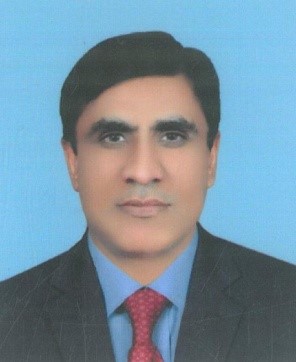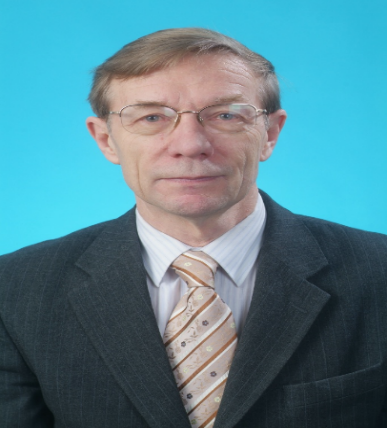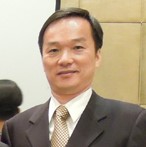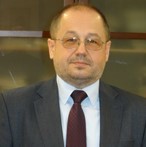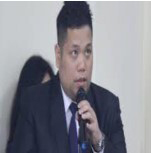Invited Speakers
Dr. Abdul Majeed Nadeem
Assistant Professor, Government College University Faisalabad, PakistanSpeech Title: Understanding the Environmental Performance for Sustainability in Asian Countries
Abstract: The rapid pace of growth in different sectors of the global economy has resulted in a wider range of negative environmental consequences and as a result of this, the focus of scientific communities, worldwide, has been directed to seek a balance between socio-economic, political and environmental conditions. A series of efforts have been agreed upon and implemented globally for environmental protection by the United Nations (UN) since the “Declaration of the UN conference on Human Environment” in 1972. Under the 2030 Agenda for Sustainable Development, the countries are now answerable to its citizens to provide information on their environmental policies for pollution control and natural resource management to ensure national sustainability. The environmental outcome of a country depends on its industrial and services sectors, and the evaluating factors held responsible for environmental performance plays a crucial role in policy development as well as the measurement of policy outcomes for the country. Thus, analyzing the Environmental Performance will provide a strong base for effective policy making to ensure environmental progress and maximizing the rate of return on investment in environmental management to ensure environmental sustainability. The effects of environmental change are rising, and no part of the world is immune. Asia is the biggest continent globally with regard to land and population having the world’s most carbon emission countries and polluted cities. Due to the radical increase in CO2 emissions, the Asian region is facing rigorous issues of biodiversity loss, decrease in agriculture yield, accessibility of clean and safe drinking water, and deforestation putting drastic negative impacts on the environmental performance. Countries’ welfare is also correlated with environmental performance thus the aim of economic policies should be to ensure environmental sustainability without hampering economic development. Keeping in view this issue, the current study aims at evaluating the determinants of environmental performance in order to evaluate the outcome of various efforts done so far for environmental improvement in 34-Asian countries using data period of 2006-2017. The most updated panel study techniques are employed. The existence of cross sectional dependence (CD) in panel countries is confirmed by CD tests. The results of the second generation panel unit root test lead to apply the Westerlund panel co integration test, which confirms the long-run co integration in selected variables in the panel countries. To explore the direction of causal association among variables, Augmented Granger Causality test with error correction term is applied for long- run association. A bi-directional causality between Environmental Performance Index (EPI) and Gross Domestic Product while uni-directional causality between EPI and forest area is founded. A feedback hypothesis between environmental performance and renewable energy while conservation hypothesis between EPI and food production index holds. The Fully Modified Ordinary Least Square (FMOLS) estimation technique was used for the estimation of long-run elasticity coefficients to tackle the problem of endogeneity and serial correlation. The results show that renewable energy and forest area significantly improve while food production index and fertilizer use significantly reduce the environmental performance in Asian countries. The introduction of eco-innovations in production technologies, eco-friendly methods in agriculture sector and forest area enhancement is suggested for improving environmental performance in the region.
Dr. Kirill Nikolaevich Voinov
Professor, Saint-Petersburg National Research University of Information Technologies, Mechanics and Optics, RussiaSpeech Title: Different Aspects Connected with The Lubricants
Abstract: In this paper we describe many important aspects connected with the lubricants, how effectively save lubricant between pairs of friction? What kind of rational shapes for the lubricant must be and what it will be connected with wear and tear using the new organic lubricant? New devices to control adhesion and quality for different lubricants (plastic and liquid).
Moreover, there is one physical model which helps to catch car exhausted gases and carcinogenic evaporations.
Keywords: new organic lubricant; plastic; holding lubricant in mechanisms; clear ecology air; catch gases and evaporations.
Dr. Youichi YASUDA
Professor, Laboratory of Environmental Hydraulics, Department sub-head of Civil Engineering, College of Science and Technology, Nihon University, JapanSpeech Title: Improvement of flow condition in channelized river due to stacked boulders
Abstract: Recently, a channelized river was constructed in natural rivers from the point of flood control, and the river fell into drainage channel. During flood stages, it might be impossible for aquatic animals to stay at channelized river. Also, degradation and disappearance of gravel bed might be formed easily, because flood flow was concentrated into the same route for normal stage. The improvement of flow condition in channelized river must be required as soon as possible. As a short-term of construction for the improvement, the installation of stacked boulders might be helpful for both habitat and refuge of aquatic animals. The installation of stacked boulders with about 1 m size was conducted at channelized portion with 20 m wide and 1/200 slope in Kando River, Shimane Prefecture, and a surface jet flow with three dimensional could be formed in both normal and flood stages. The stability of the installation during flood stages has been confirmed in both scale model and prototype. After the installation, several kinds of aquatic animals could be observed around stacked boulders, and movable gravels with 3 mm to 100 mm diameters were deposited below stacked boulders.
Dr. Binu Sharma
Professor, Civil Engineering Department, Assam Engineering College, Assam, IndiaSpeech Title: Static Compaction Characteristics of Soils
Abstract: The modified Proctor’s test, the reduced modified Proctor's test, the standard Proctor's test and the reduced standard Proctor’s test are dynamic methods which are often used in the laboratory to ascertain the compaction characteristics of soils at different energy levels. However, these dynamic compaction methods are laborious and time consuming and have some shortcomings for which it has been attempted in recent years to ascertain the compaction characteristics of soil by static compaction method.
A laboratory procedure is devised to determine the relationships between moisture content and dry unit weight by using static compaction method for different static pressures. The static compaction pressure test is performed in the Proctor mould where the soil is statically compacted in the mould at different water contents. For fined grained soils, similar to dynamic compaction, parabolic curves were obtained between moisture content vs. dry unit weight at different static pressures. The static pressures equivalent to the energy inputs of the different Proctors test to obtain the corresponding optimum moisture content and maximum dry unit weight were determined for fine grained soils. The equivalent static pressures so determined can be used to obtain the parabolic static compaction curve which will result in simplification of the compaction procedure and will also result in considerable saving of time, money and effort. However, in case of fined grained soils, an equivalent static pressure could not be determined for the Modified Proctor test. The study is also extended to determine the static compaction characteristics of coarse grained soils also. In case of coarse grained soils, an equivalent static pressure could not be determined as that of fine grained soils. For SP class of soil, an undulatory pattern with maximum dry unit weight near dry and towards saturated condition was observed for both the static and dynamic compaction. The dynamic compaction curve for both SC and SM class of soil is parabolic in nature. For SM class of soil, static compaction curve show a wavy pattern with maximum dry unit weight at dry and near saturated condition whereas for SC class of soil only one-sided compaction part of the curve for the rising portion of the dry of optimum side was generated.
Dr. Ming-Chun Lu
Professor, Department of Environmental Resources Management, Chia Nan University of Pharmacy and ScienceSpeech Title: Treatment of industrial wastewaters by fluidized-bed technology
Abstract: Fenton process has been proven to be effective in the treatment of recalcitrant organic compounds. One disadvantage, however, is the production of a large amount of sludge that needs further treatment and disposal. The production of sludge is reduced by the use of fluidized-bed Fenton (FBF) process where iron is crystallized onto the surface of the carriers in the reactor. An overview of the recent developments on the application of FBF process to the treatment of industrial wastewater will be presented. The advantages of FBF process over other technologies that are based on Fenton oxidation in terms of performance, operating conditions and factors affecting the removal efficiency will be highlighted. Included also will be the reaction kinetics and mechanisms involved and the carriers that were used. Finally, large-scale applications will be presented and described.
Furthermore, the fluidized-bed technology can be also applied for metal ion recovery such as nickel and copper with homogeneous crystallization. This technology overcomes the limit of adding carriers at the initial operation stage. By changing the operation conditions and reactor design, crystals are formed in the reactor directly. The process can produce granules with high purity and therefore has potential to be applied in product synthesis and wastewater treatment. There are several advantages: (1) saving space, (2) reducing sludge, (3) cost down, (4) higher efficiency. Compared with conventional heterogeneous process, this new one can generate high-purity products and therefore it is easy to be applied in future.
Dr. Adam POSTAWA
Professor, Department of Hydrogeology and Engineering Geology, Faculty of Geology, Geophysics and Environmental protection, AGH University of Science and Technology, Cracow, PolandSpeech Title: Centuries of Zn-Pb ores mining in Olkusz region (S Poland) and its impact on an environment
Abstract: Zn-Pb ore deposits in Olkusz area (S- Poland) occur within a Triassic dolomites and limestones. These carbonate rocks constitute also a large fissured-karstic type aquifer. Mining exploration and ore processing, which began in the Middle Ages, caused serious changes in groundwater flow regime and groundwater chemistry. It also influenced surface waters causing important changes in surface morphology and created multiple potential sources of environmental pollution. The main subjects of this investigation were impacts of the ore mining on environment thus the authors focused on a mining drainage and changes in chemical composition of groundwater close to mines' excavations. Underground mining inevitably leaded to intensive dewatering of excavations and surrounding aquifers in order to make deep exploration and exploitation of ores possible. In the Olkusz area, long-term dewatering created a depression zone of regional scale. It is estimated that it affected the area of over 400 km2, and influenced all aquifers remaining in hydraulic connections (Quarternary, Jurrasic, Triassic), and that in central part of mining region a water table level has dropped up to over 150 metres. As an effect of this drop many springs cease to exist and water levels observed in wells significantly decreased. Due to significant increase in hydraulic gradients' values in some areas, deformations of land surface appeared (e.g. suffosion and karstic pits, irregular subsidence). This caused damages in infrastructure and buildings. Changes in water regime triggered activation of numerous sources of pollution (internal and external), mostly in Triassic aquifer. External sources of pollution are located at the surface or just below the surface in shallow excavations. Mining drainage caused contamination or pollution of water mostly within Triassic aquifer, with substances from those sources. The internal sources of pollution were induced also by mining drainage, which led to the expansion of an aeration zone within carbonate rocks which are reach with metal's sulphides (mostly pyrite, marcasite, galena and sphalerite). Development of a thick aeration zone caused significant changes in red-ox conditions and oxidizing of those sulphides. In this process large amounts of acid solutions were created, which were then buffered in contact with carbonate rocks. As a result, highly soluble hydroxy-sulphates were produced. High concentrations of SO42- (up to 20 g/L), Ca2+ (up to 0,7 g/L) and Mg2+ (up to 5 g/L) appeared in groundwater, especially in the inflow to the mining excavations.
Dr. Goh Pei Sean
Associate Professor, School of Chemical and Energy Engineering, Faculty of Engineering, Universiti Teknologi Malaysia, MalaysiaSpeech Title: Photocatalytic Membranes for Water Reclamations
Abstract: Water reclamation is an attractive approach to address global water shortage issues. Many innovative technologies have been established for contaminant removal from various wastewater sources. The utilization of nanosized photocatalysts for the remediation of environmental problems has shown remarkable potential in line with the rapid development of nanoscience and nanotechnology. The modification in atomic level to produce particles that are independent in nanoscale has provided a myriad of novel characteristics that cannot be found in bulk materials. The photocatalyst can be synthesized using bottom-up approach to carefully tailor the desired properties, such as surface charges and functionalities to interact with the pollutants. Tremendous research efforts have been focused on the fine-tuning and the modification of these semiconductors for efficient degradation of organic pollutants since semiconductors are able to efficiently degrade a wide range of organic-based pollutants found in wastewater. On the other hand, membrane technology is also playing increasing roles in wastewater treatment and water reclamation owing to their attractive features compared to conventional techniques. Lately, photocatalysts and membrane technologies have been merged to form a relatively new class of nanocomposite membrane known as photocatalytic membranes. The synergic combination of the separation and reaction processes allows optimal performances in terms of productivity and sustainability. Through the unique combinations, the limitations of photocatalytic reaction and membrane separation can be resolved. The polymeric membrane acts as the host to enable facile recovery of photocatalyst nanoparticles, hence minimizing the risks of secondary pollutions. Likewise, the fouling issues associated to membrane technology can be mitigated through the incorporation of photocatalysts. The design of the photocatalytic membrane and its reactor requires a multidisciplinary approach in which different disciplines including chemistry, membrane engineering, and process engineering. This presentation focuses on the development of novel and efficient photocatalysts and photocatalytic membranes for wastewater treatment and water reclamation. The roles of nano-photocatalysts in heightening the efficiency of membrane technologies through the fabrication of photocatalytic membranes will be highlighted. The future outlooks, challenges and upscaling of this innovative technology will also be covered.
Dr. Y. Cengiz Toklu
Professor, Faculty of Engineering and Architecture, Beykent University, TurkeySpeech Title: New trends in solving project scheduling problems with resource constraints
Abstract: Scheduling of construction projects is a crucial problem for planning engineers and schedulers. The problem is somehow easy to solve if there are no resource constraints, no season-dependent activities, no predetermined date restrictions. If all these difficulties, and more, are to be considered, the problem becomes highly complicated necessitating special techniques to be used. For these cases the techniques adopted are mathematical ones and metaheuristic methods. Last years have shown that metaheuristic methods are used for this purpose in ever increasing numbers. There are two main approaches in applications of meta-heuristic methods to construction scheduling projects as to the formation of the main unknown vector. In the first approach the unknown vector is formed by the list of activities giving the order of priority of their executions. In the second approach, the vector is formed by start dates of the activities. A quick review of the literature indicates that the first approach is much more popular than the second one although the second one, that can be called as a new trend, is much more promising as shown by applications in the literature. The presentation compares these approaches and gives information about proactive and reactive scheduling. It is also noted that in scheduling projects within dangerous environments, as on space bodies, new way of applications of metaheuristic algorithms might be preferable for eliminating unwanted situations.
Dr. Cheng Zhao
Professor, Key Laboratory of Geotechnical and Underground Engineering of Ministry of Education, Department of Geotechnical Engineering, Tongji University, Shanghai 200092, ChinaSpeech Title: Damage process of granite specimens in hydraulic fracturing based on DIC method
Abstract: Hydraulic fracturing is widely used for the stimulation of oil and gas reservoirs in addition to the reconstruction of enhanced geothermal systems that target reservoirs. However, hydraulic fracturing behaviour is not comprehensively understood and requires further investigations, such as the damage process of crack initiation, propagation, and coalescence. Therefore, a series of hydraulic fracturing tests on granite specimens was conducted. Through a specially designed hydraulic seal device, the fracturing processes were captured by a high-speed camera. Direct observations of fracturing processes at different scales were achieved through lenses with different magnifications, and displacement and strain fields were obtained during the whole fracturing process based on DIC method. Some experimental laws on hydraulic fracturing were obtained: The geometry of pre-existing cracks and stress conditions affect the damage process and the failure mode. Before hydraulic fracturing, the obvious strain localization appears near the pre-existing flaws. Further mesoscopic observations show that the strain localization, full of microcracks, is the damage process zone of the specimen. The degree of damage increases further with the increase of pressure until crack propagation. Therefore, damage variables can be proposed to describe the hydraulic fracturing process according to the strain field. The accumulation of damage before hydraulic fracturing may take tens of seconds, while the crack propagation process is very short, only serval micro seconds.
Dr. Darmawan Napitupulu
Assistant Professor, Research Center for Policy and Management of Science, Technologyand Innovation, Indonesian Institute of Sciences, Indonesia
Speech Title: The classification of water quality based on K-Means algorithm
Abstract: A classification algorithm is used to assign predefined classes to test instances for evaluation or future instances to an application. This study conducted a clustering or classification model to determine water quality using K-Means algorithm. The water quality is very important in ensuring people get clean water to drink for their health. Application of KMeans algorithm as a data mining method is used in this study to predict clean water based on the water quality parameters. The result showed that the classification using K-Means algorithm could be applied to classify/predict the clean and not clean water.
